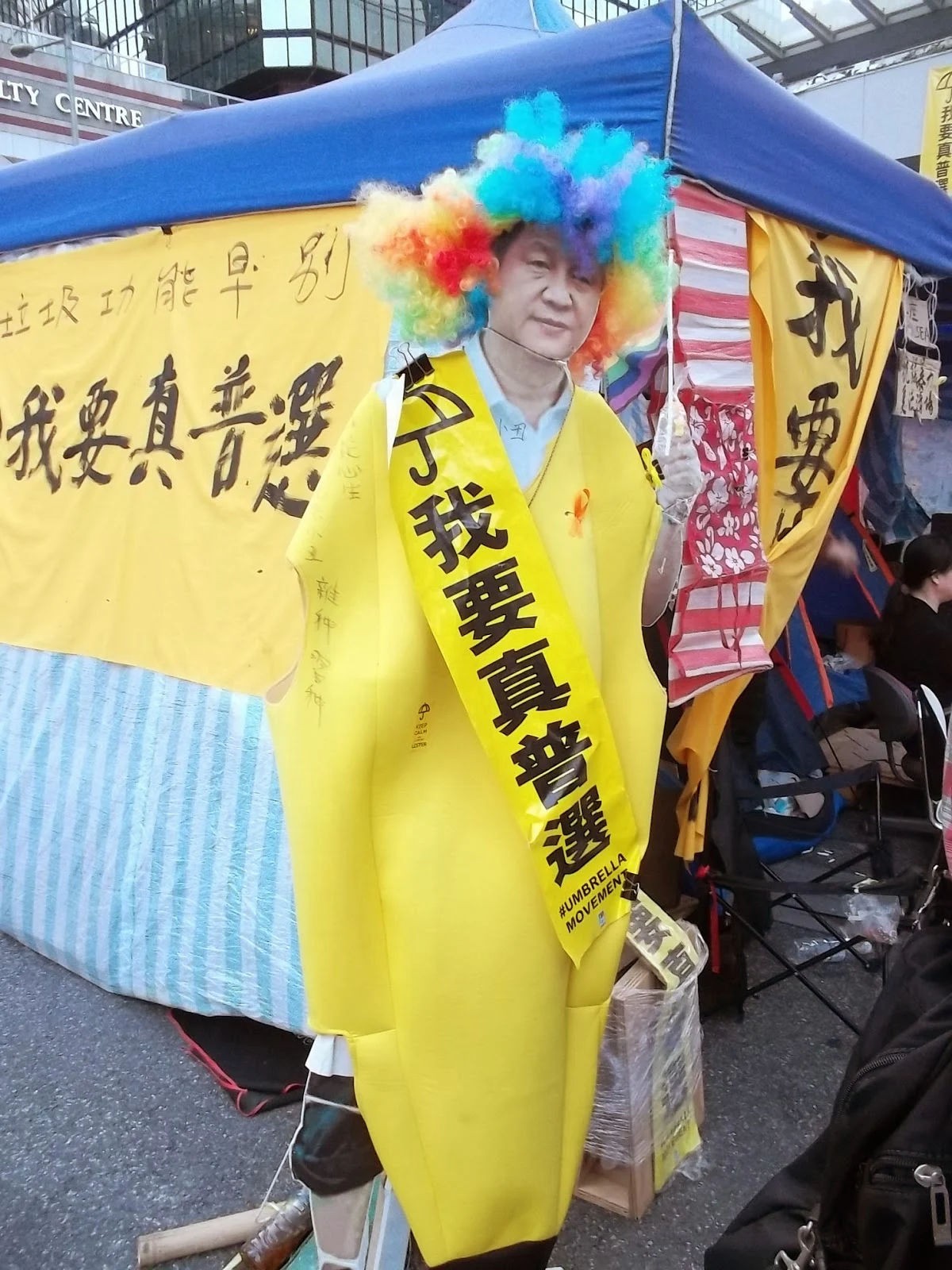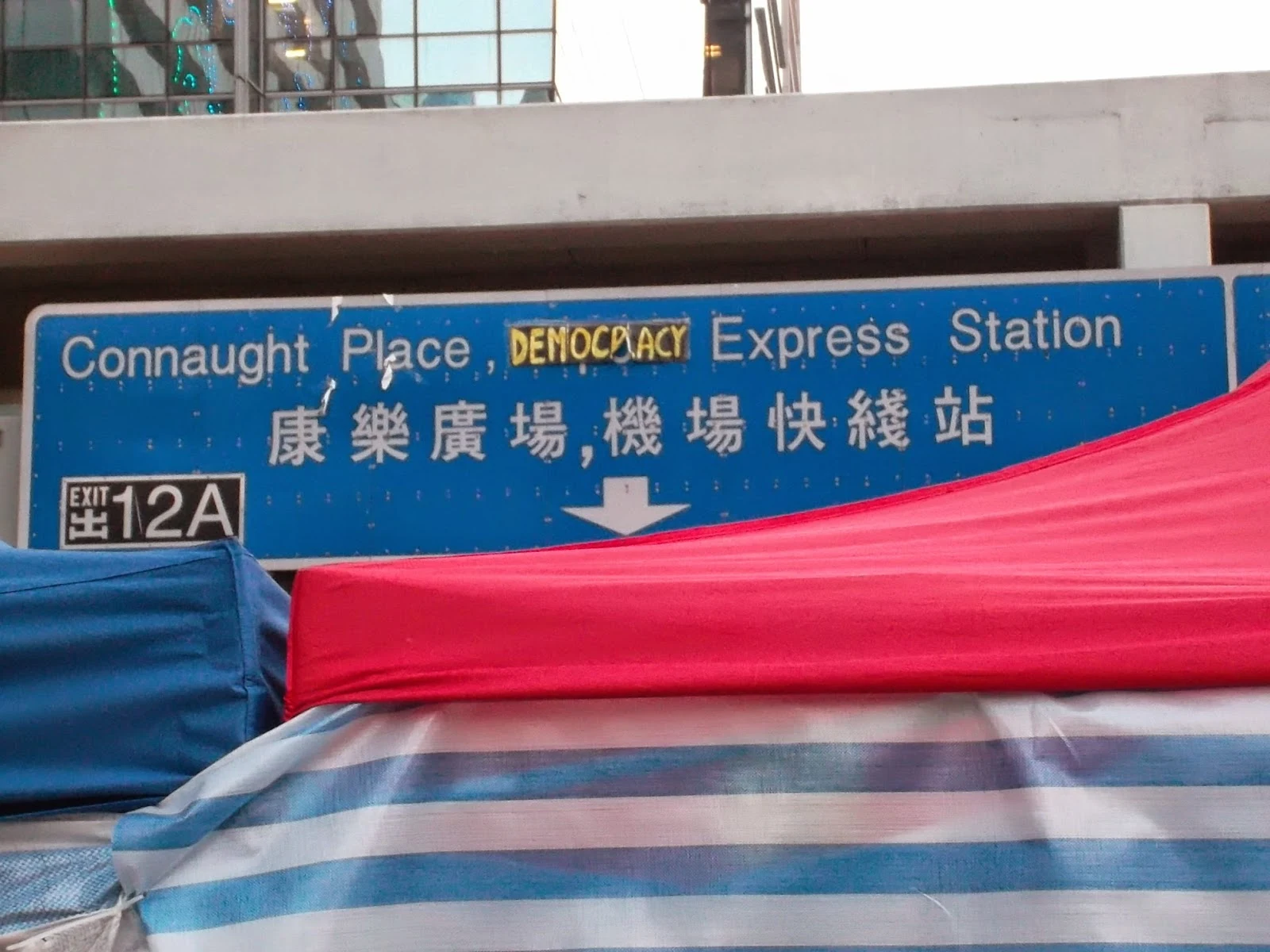When I left Hong Kong back in September, Occupy Central had just begun. I went to Admiralty and Central on the first day of the protests, which was the 28th. The following morning I flew to Taipei.
I was very sad, not only because I was leaving a city which I love more and more each time I return there, but also because I had seen history unfolding before my eyes and yet I was suddenly cut off from those events. While I was sitting on the express train to the airport, I had already made up my mind that I would go back to Hong Kong as soon as possible.
And I was right. What I have seen in Hong Kong over the past few days is amazing, and I feel glad and privileged that I could be part of this historic moment. At least I'll be able to tell my grandchildren that I was here.
The "Umbrella City"
After nearly two months, the "Umbrella Revolution" has lost much of its momentum. The pro-democracy camp seems unable to convince Beijing to revise its reform of the electoral system and grant the former British colony genuine universal suffrage.
Meanwhile, the protesters have settled down permanently in an area of the city centre which is much larger than I had thought. They have created a fascinating city within the city (see this map in which I have drawn the approximate location of the occupied zones). The first time I went there I was amazed.
The "Umbrella City" is a proof of what great things human spontaneity and creativity can produce. The settlement is built like a normal city: it has houses and streets, it has its own hospitals, power plants, infrastructure, public spaces; it has its own politics, its own public monuments, and even its own schools and libraries. It's just that all these things have been made by common citizens in a completely spontaneous manner, in a spirit of communal self-rule.
The "Umbrella City" is a triumph of civic self-organisation, ingenuity and artistic inventiveness. The houses are simple tents scattered all over roads that were once dominated by the noise of incessant traffic. The hospitals are improvised first aid shacks. There is a small windmill power station that generates energy; there are large tents with tables, shelves and books for young people to continue studying even during the occupation. Painters, sculptors and common citizens have given free rein to their creativity and transformed the area into a colourful place of art and self-expression, which blends in a distinctive way with the surrounding skyscrapers, banks, and government buildings. The "Umbrella City" is the product of Hong Kong's uniqueness.
Whether this uniqueness will be crushed - as I argued in a previous post about post-1997 Hong Kong - under the pressure of state-promoted Chinese nationalism and loyalty to the Communist Party, remains an open question.
I tried to write a long post with a lot of pictures, but blogspot doesn't show them, so I will write a few small posts introducing some of the photos I took.
 |
| The protesters have made PRC President Xi Jinping a symbol of their movement, turning him from an enemy into a supporter. |



Comments
Post a Comment